Ana Playing With Fire, and Mud: The Videos of Ana Mendieta at Martin Gropius Bau
- Christian Hain
- May 21, 2018
- 5 min read
Updated: Mar 23, 2020
(Berlin.) Complementary to Louise Bourgeois at Schinkel Pavillon, Martin Gropius Bau also shows a legendary, 20th Century, woman, “feminist”, artist: Ana Mendieta. The fiery Cuban tree-hugger's video works of the 1970s have only recently been transferred to HD, and this selection of twenty-three clips can justly be regarded as a representative sample that covers all relevant topics.
Classifying Mendieta’s films can give cause to some confusion: correctly spoken, she staged performances in and with nature that left behind land art-ish traces while filming the act and aftermath. Her films are more than mere documentation - artworks in their own right. For the most part limited to a few minutes, they appear related to “living paintings”, and not just when the performance literally involved the application of colour to a surface, such as the artist tracing her own silhouette in red on the wall. It feels safe to assume, the phallic result in this example is no coincidence. Equally not by chance, the colour reminds of human blood. Blood and genitals, here we are with two of Mendieta’s main obsessions. In other works, it’s blood stains before Mayan ruins, and blood stains on the pavement, the latter inspected - or ignored - by passers-by as recorded with a hidden camera. As to reproductive organs... well, we’ll come to this shortly. Pranks and Eros, the artist could make it big on the internet today; but it would be unfair to reduce her to this!
Once again, let's take a step back: Entering the anteroom to the show the day it opened, a penetrant stench was welcoming us. Did they paint the walls with organic colour, after the best before date? Had there been a performance lately? The official influences to Mendieta’s work do include Vienna Activism, after all. But then, the show started without further ado: The first exhibition room already hosts five clips in small format on the walls – no fashionable x-channel video installation on 150” flatscreens around! Instead, the amateurish charm of 8mm and warm colours suggesting the feel of 1970s home video nights. A man struggles free from under an oval burial mound, rocks, pebbles, and earth – no, that’s a woman, and even the artist herself! Again, the oval shape is no coincidence. You might think of beach games, Japanese bankers eating Sushi from the body of a naked hostess, or, with a bit of luck, remember this Freudian line from a 2006(?) song by rather obscure singer/songwriter Lauren Hoffmann: “So you try to find a hole // Deep enough to lie in” (and are you familiar with classic 1970s zombie films of the Lucio Fulci trash type?). Birth and death, from dust and back, nature, that cycle of life thing.
More explicit - is there such a thing as terra-philia? - : Vulcan, an inclined heap of earth with a vertical slit in the mid. And it burns. Literally: Set on fire, Mother Earth’s mons veneris burns away from bottom to top, slowly first, then more rapidly, culminating in passionate smoke. The location “Old Man’s Creek, Sharon Center, Iowa” adds a touch of Susannah and the Elders, which reminds me: We wanted to talk Paintings! Not much happens in most clips, the camera won’t move, some are basic self portraits in video. Disguised as a water nymph, Ophelia reloaded, Mendieta’s body, the head inclined in a (un)natural curve, appears almost abstract.
A close up of her face bleeding on the forehead; recalling artists of the same generation shooting or otherwise mutilating themselves, we should be grateful she didn't go farther than the allusion, did not actually take her scalp. Another, more performative, work features the artist smearing her naked body with blood, or red paint (if it was Gina Pane, we could be sure it’s all blood), a liquid she's taking from an earthen pot to fully cover herself. That one’s called Blood inside Outside (microcosm and macrocosm?).
It continues with humanoid, or: angelic, forms, a basic design in variations, mostly placed on the ground, and either painted or sculpted from mud. One even serves naked Ana for a bed. The art historian sees the Venus of Willendorf trope, others a Golem or children taking baking forms to the beach. Mentioning this, water makes its appearance when invading, destroying, a such form. Mendieta called them siluetas, and si señor: that’s "silhouettes" in Spanish. In leaves and grass, in “groovy” bushes, they once again look... vulvic (that’s not the name of a French mineral water).
You almost, and incorrectly, suspect contemporary Latin American politics when a silueta is made from plastic body bags, but that was filmed in Iowa (and, besides, nobody knew back then how bad plastic bags really are). In the case of a standing silueta, the fire starts between her legs, and please recall me: when was the first Burning Man festival held? Once, it's only suggested by two snake like strings of mud, like leavings of immense sandworms. Primitive arts, cave paintings that have stood the test of time, could come to mind.
Two works stand out: A mirror leaning to a tree in the shadows, reflecting a humanoid shape that is easily mistaken for “not homo sapiens sapiens”. It could easily be Jane Goodall in participant observation, but is just Ana Mendieta. Narcissus? Secondly, monochrome recordings of a tree at night. A black shadow approaches, then vanishes inside. Two entities merge, man becomes a part of nature again (and never was anything else). Infrared images reveal the humanoid form, a fairy, kodama, or dryad, now hidden, protected, imprisoned, in the trunk. Metempsychosis, or a tree’s wandering soul (those roots can get annoying, we guess). Still another film observes a cave entry formed like a nose in close up, and no chance to estimate the actual dimensions. Giving nature a voice, and a face, there’s Animism lurking.
Somehow it all boils down to the forgotten side of 1970s discourse: not bureaucratic materialism, but hippie spiritualism. No deconstructed nothingness, but something else. About time: This world definitely needs less of this world, less Foucault and more Castañeda - not least in art. A more colourful tabula would more interesting, don’t you think? There’s no way around it, you always create your world, and “truth”.
This, of course, makes it difficult to call Ana Mendieta a "feminist" in modern sense. If you continue down that path, you might find that Capitalist career and “success” is not the only way, not the only meaning in life and of “equality”.
Covered in Time and History: The Films of Ana Mendieta is not a huge show, but large enough and rounded up with photographs, film stills, on which, interestingly, the artist’s signature looks like “Ona Mendieta”. "Ona", that’s the name of a South American tribe, and of a character in William Blake’s mythology. Could also just be bad handwriting.
It’s never been satisfactorily established, whether Carl Andre did or did not lend a hand when his wife Ana went for a fly from their thirty-third floor New York apartment in 1985, leaving behind only the siluetas of her art, but thankfully, MGB remains silent about this. There have been protests in the past, now it's finally time to let her art speak for it- and: her-self.
Cannot say, no trees were harmed in the making of these films, though!
Covered in Time and History: The Films of Ana Mendieta, Martin Gropius Bau, 20 April-22 July 2018-05-18
World of Arts Magazine - Contemporary Art Criticism

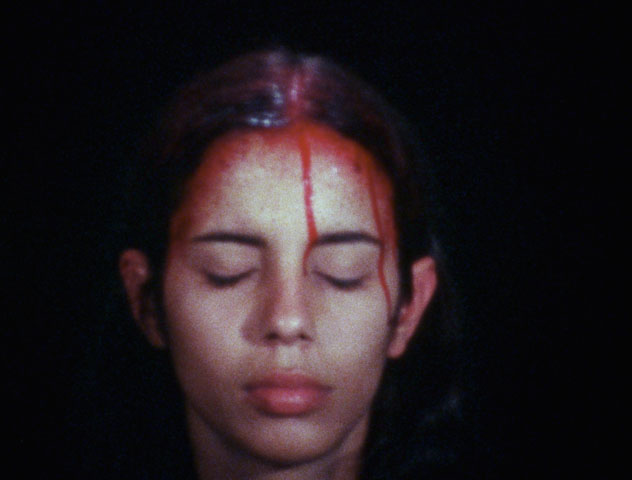

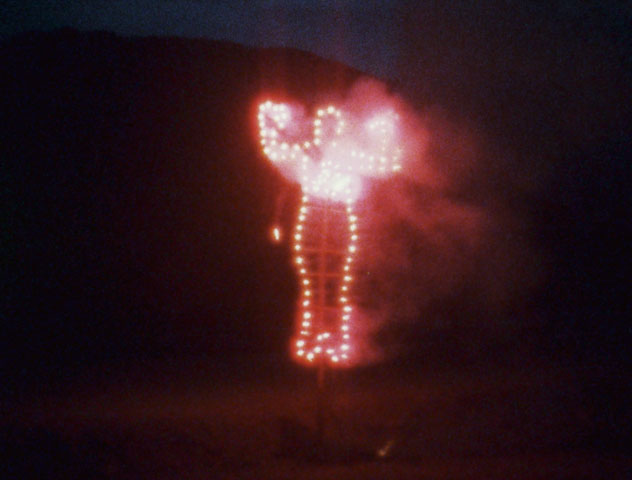

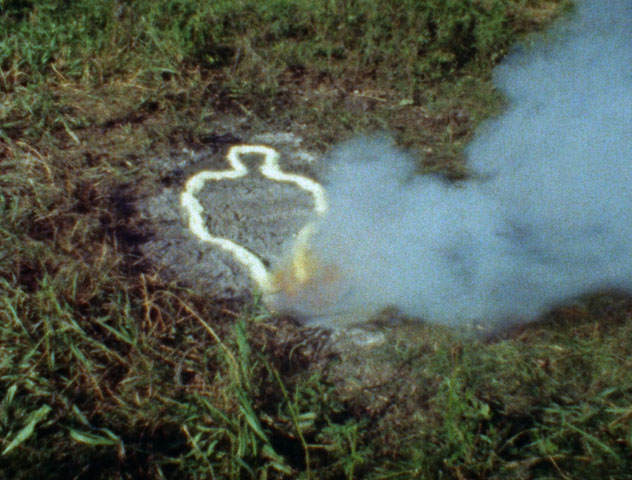

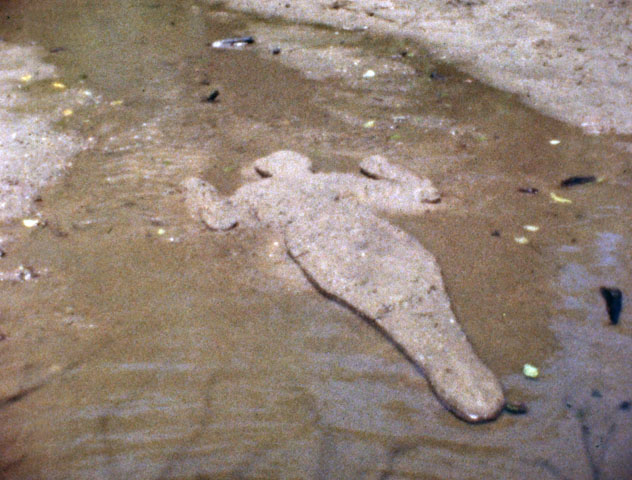

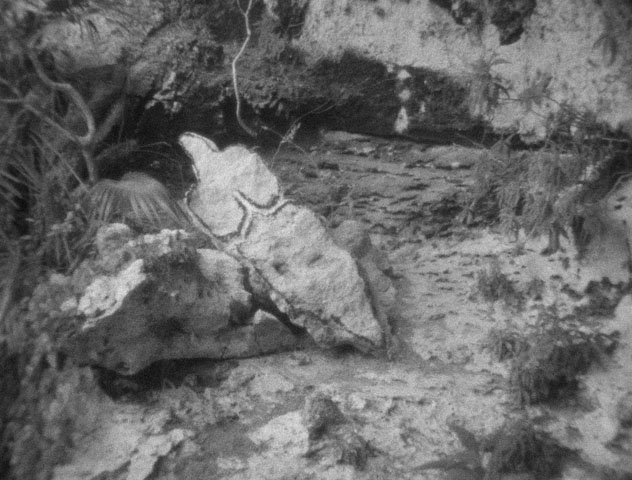

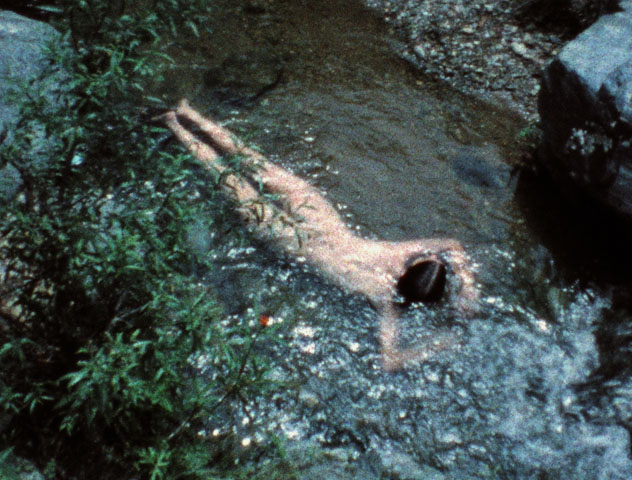
Comments